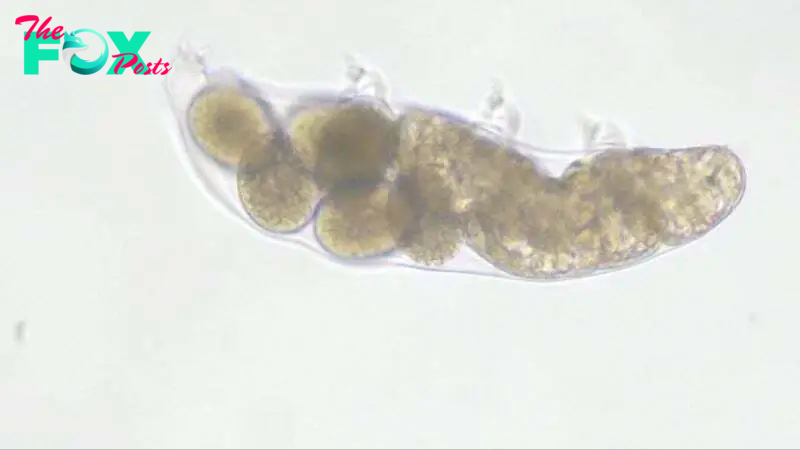Technology
Chinese scientists decode tardigrades' radiation resistance, aims for human protection | The Express Tribune
Chinese researchers have identified the mechanisms that grant tardigrades their exceptional resistance to radiation, offering insights that could one day enhance human resilience to similar conditions.
According to a study published Friday in *Science*, scientists detailed how the tiny, resilient invertebrates—commonly known as water bears—survive extreme environments, including intense radiation, high and low temperatures, dryness, high pressure, and even the vacuum of space.
In 2018, scientists collected tardigrades from Henan Province in central China, identifying a previously undocumented species, *Hypsibius henanensis*.

A micrograph of tardigrade. PHOTO: NATURE
The researchers analyzed the genome of this new species and identified three key mechanisms responsible for its radiation resistance: "horizontal gene transfer" from organisms such as plants, fungi, and bacteria; a unique "radiation-induced protein" that aids DNA repair; and "general stress-related proteins" that also support DNA recovery.
The study, the scientists explained, could guide future research into strengthening human cell resilience. "We've found that the molecules, which offer anti-radiation protection for tardigrades, can significantly improve the anti-radiation ability of human cells after being transferred into human cells," said Zhang Lingqiang, a researcher from the Academy of Military Medical Sciences.
"This suggests they have significant potential application value and can lay a theoretical foundation for developing protections against ultra-strong radiation," Zhang added.
-

 Technology10h ago
Technology10h agoTransplanting insulin-making cells to treat Type 1 diabetes is challenging − but stem cells offer a potential improvement
-

 Technology15h ago
Technology15h agoShould I worry about mold growing in my home?
-

 Technology15h ago
Technology15h agoBlurry, morphing and surreal – a new AI aesthetic is emerging in film
-

 Technology1d ago
Technology1d agoSpaceX’s Starship advances in spaceflight despite booster landing failure | The Express Tribune
-

 Technology1d ago
Technology1d agoGreat Barrier Reef faces 'significant coral deaths' following recent climate events | The Express Tribune
-

 Technology1d ago
Technology1d agoMeta to challenge India's data-sharing restrictions between WhatsApp, other apps | The Express Tribune
-

 Technology1d ago
Technology1d agoMerlin inks £85m deal to bring Minecraft attractions to UK, US parks by 2026-2027 | The Express Tribune
-

 Technology1d ago
Technology1d agoRethinking screen time: A better understanding of what people do on their devices is key to digital well-being

















